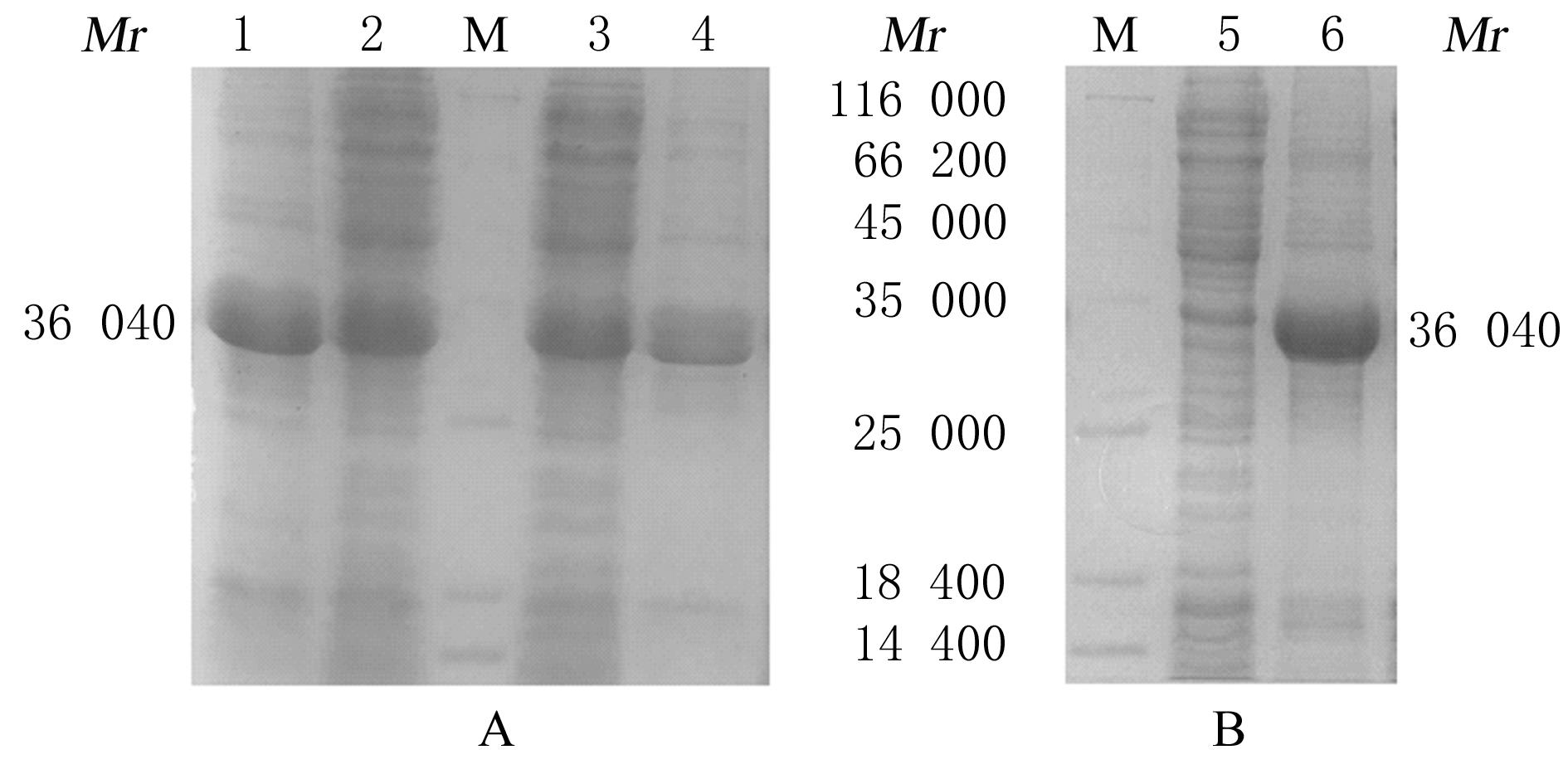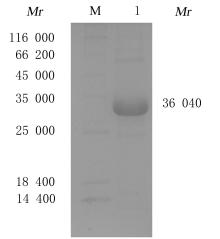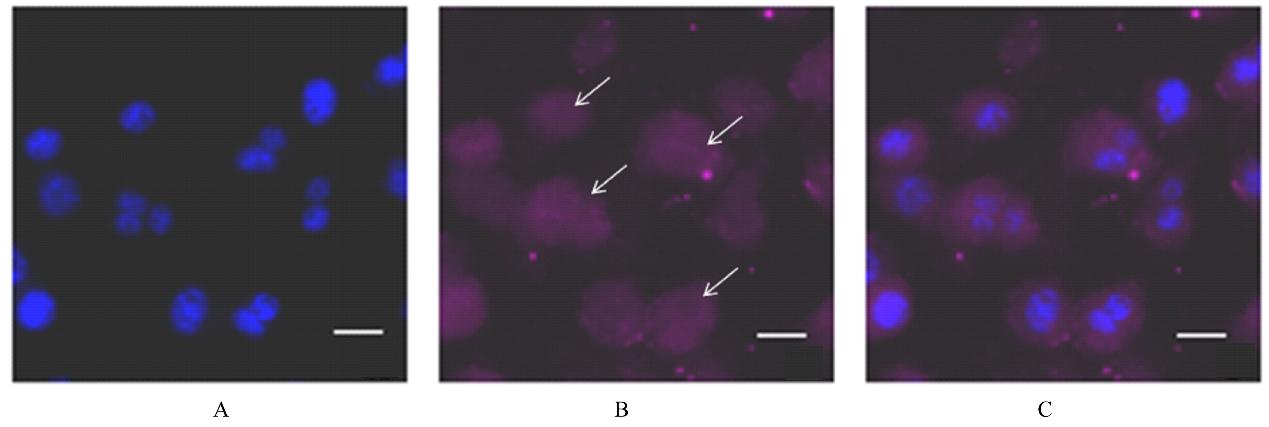| 1 |
WEISSLEDER R. A clearer vision for in vivo imaging[J]. Nat Biotechnol, 2001, 19(4): 316-317.
|
| 2 |
HALL C, VON GRABOWIECKI Y, PEARCE S P, et al. iRFP (near-infrared fluorescent protein) imaging of subcutaneous and deep tissue tumours in mice highlights differences between imaging platforms[J]. Cancer Cell Int, 2021, 21(1): 247.
|
| 3 |
FILONOV G S, PIATKEVICH K D, TING L M,et al. Bright and stable near-infrared fluorescent protein for in vivo imaging[J]. Nat Biotechnol, 2011,29(8): 757-761.
|
| 4 |
关新刚, 苏维恒, 于 欣, 等. Tat-GFP融合蛋白的表达纯化及其穿膜活性[J]. 吉林大学学报(医学版), 2014, 40(4): 725-728.
|
| 5 |
刘珊珊, 彭 亮, 陈建林, 等. 红色荧光蛋白mCherry在衣原体感染模型中的应用[J]. 中华微生物学和免疫学杂志, 2020, 40(12): 950-957.
|
| 6 |
SHCHERBAKOVA D M, VERKHUSHA V V. Near-infrared fluorescent proteins for multicolor in vivo imaging[J]. Nat Methods, 2013, 10(8): 751-754.
|
| 7 |
PIATKEVICH K D, SUBACH F V, VERKHUSHA V V.Far-red light photoactivatable near-infrared fluorescent proteins engineered from a bacterial phytochrome[J]. Nat Commun, 2013, 4: 2153.
|
| 8 |
SHCHERBAKOVA D M, BALOBAN M, EMELYANOV A V, et al. Bright monomeric near-infrared fluorescent proteins as tags and biosensors for multiscale imaging[J]. Nat Commun, 2016, 7: 12405.
|
| 9 |
AN F F, CHEN N D, CONLON W J, et al. Small ultra-red fluorescent protein nanoparticles as exogenous probes for noninvasive tumor imaging in vivo [J]. Int J Biol Macromol, 2020, 153: 100-106.
|
| 10 |
HERBERT F C, BROHLIN O R, GALBRAITH T, et al. Supramolecular encapsulation of small-ultrared fluorescent proteins in virus-like nanoparticles for noninvasive in vivo imaging agents[J]. Bioconjug Chem, 2020, 31(5): 1529-1536.
|
| 11 |
吴 娇, 杨唐斌, 柳长柏. 肿瘤归巢肽及其在肿瘤靶向治疗中的应用[J]. 海南医学, 2016, 27(1): 82-84.
|
| 12 |
FOGAL V, ZHANG L L, KRAJEWSKI S, et al. Mitochondrial/cell-surface protein p32/gC1qR as a molecular target in tumor cells and tumor stroma[J]. Cancer Res, 2008, 68(17): 7210-7218.
|
| 13 |
JIANG Y J, LIU S J, ZHANG Y, et al. Magnetic mesoporous nanospheres anchored with LyP-1 as an efficient pancreatic cancer probe[J]. Biomaterials, 2017, 115: 9-18.
|
| 14 |
REN Y, CHEUNG H W, VON MALTZHAN G,et al. Targeted tumor-penetrating siRNA nano complexes for credentialing the ovarian cancer oncogene ID4[J]. Sci Transl Med, 2012, 4(147): 147ra112.
|
| 15 |
TIMUR S S, YALÇIN G, ÇEVIK Ö,et al. Molecular dynamics, thermodynamic, and mutational binding studies for tumor-specific LyP-1 in complex with p32[J]. J Biomol Struct Dyn, 2018, 36(5): 1134-1144.
|
| 16 |
ZHANG X Q, HUANG Y M, SONG H L, et al. Inhibition of growth and lung metastasis of breast cancer by tumor-homing triple-bioresponsive nanotherapeutics[J]. J Control Release, 2020, 328: 454-469.
|
| 17 |
SONG N N, ZHAO L Z, XU X Y, et al. LyP-1-modified multifunctional dendrimers for targeted antitumor and antimetastasis therapy[J]. ACS Appl Mater Interfaces, 2020, 12(11): 12395-12406.
|
| 18 |
HUANG X, YIN Y L, WU M, et al. LyP-1 peptide-functionalized gold nanoprisms for SERRS imaging and tumor growth suppressing by PTT induced-hyperthermia[J]. Chin Chem Lett, 2019, 30(6): 1335-1340.
|
| 19 |
LV C, ZHANG T Y, LIN Y, et al. Transformation of viral light particles into near-infrared fluorescence quantum dot-labeled active tumor-targeting nanovectors for drug delivery[J]. Nano Lett, 2019, 19(10): 7035-7042.
|
| 20 |
ZHENG F F, WANG C, MENG T T, et al. Outer-frame-degradable nanovehicles featuring near-infrared dual luminescence for in vivo tracking of protein delivery in cancer therapy[J]. ACS Nano, 2019, 13(11): 12577-12590.
|
| 21 |
GODARD A, KALOT G, PLIQUETT J, et al. Water-soluble aza-BODIPYs: biocompatible organic dyes for high contrast in vivo NIR-II imaging[J]. Bioconjug Chem, 2020, 31(4): 1088-1092.
|
| 22 |
COSCO E D, LIM I, SLETTEN E M. Photophysical properties of indocyanine green in the shortwave infrared region[J]. Chem Photo Chem, 2021, 5(8): 727-734.
|
| 23 |
余 梦, 张子俊, 朱国委, 等. Ag2S基近红外Ⅱ区荧光量子点的水相合成优化探究[J]. 化学学报,2021,79(10): 1281-1285.
|
| 24 |
CHANG E, THEKKEK N, YU W W, et al. Evaluation of quantum dot cytotoxicity based on intracellular uptake[J]. Small, 2006, 2(12): 1412-1417.
|
| 25 |
RODRIGUEZ E A, TRAN G N, GROSS L A, et al. A far-red fluorescent protein evolved from a cyanobacterial phycobiliprotein[J]. Nat Methods, 2016, 13(9): 763-769.
|
| 26 |
RUMYANTSEV K A, SHCHERBAKOVA D M, ZAKHAROVA N I, et al. Minimal domain of bacterial phytochrome required for chromophore binding and fluorescence[J]. Sci Rep, 2015, 5: 18348.
|
| 27 |
WILSON A L, WILSON K L, BILANDZIC M, et al. Non-invasive fluorescent monitoring of ovarian cancer in an immunocompetent mouse model[J]. Cancers, 2018, 11(1): 32.
|
| 28 |
段海潇, 杨俊寒, 王 琳, 等. 表达近红外荧光蛋白的结肠癌细胞系的建立[J]. 湖北工业大学学报, 2020, 35(5): 71-74.
|
 )
)
 )
)










